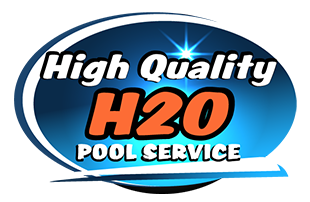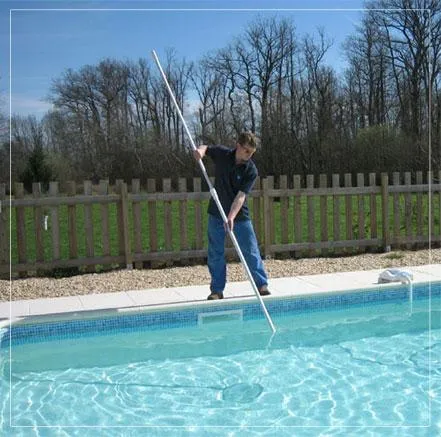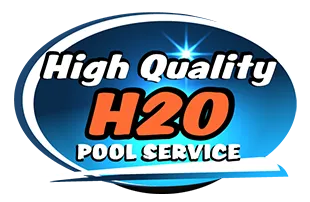CHLORINE CHEMISTRY
What is the History of Chlorine?
Chlorine was first discovered in the sixteenth century, and today is one of the most produced chemicals in the US, finding its way into a multitude of products. Chlorine is so deeply inter-twined into industry that finding alternatives would indeed change our daily lives.
How Chlorine is Made?
Chlorine is produced the electrolysis of salt water. When electricity is passed through 2NaCl (salt) and 2H20 (water), the atoms dissociate into Cl2 (chlorine) + 2NaOH (sodium Hydroxide) + H2 (Hydrogen). Cl2 is isolated in its gaseous form, and used to create other chlorine compounds used for sanitizing, bleaching and production of plastics and related products.
How Does Chlorine Work to Sanitize?
When chlorine is added to water, another dissociation occurs. When we add Cl2 (chlorine) + H2O (water), we get a reaction which leaves us with HOCl (hypochlorous acid) + HCl (hydrochloric acid). Hypochlorous acid is the active, killing form of chlorine. This is what does the real sanitizing work. The chlorine molecule or ion kills microorganisms by slashing through the cell walls and destroying the inner enzymes, structures and processes. When this occurs, the cell has been deactivated, or oxidized. The hypochlorous molecule continues this slash & burn until it combines with a nitrogen or ammonia compound, becoming a chloramine, or it is broken down into its component atoms, becoming de-activated itself.
Is Chlorine Dangerous and Unhealthy?
No doubt about it, chlorine certainly is a hazardous product, with some forms of it being more dangerous for the handler and the environment than other forms. Chlorine in a solution of water at levels found in swimming pools pose no danger for swimmers. Allergic reactions to chlorine are rare, however some individuals may experience skin irritation. Chloramines, sometimes found in poorly balanced water, are the cause of occasional red eyes when swimming. Extremely high levels of chlorine in the water could possibly release enough gas off of the surface in certain conditions to render breathing difficulties. The main hazard is towards the person in charge of adding the chlorine to the pool. Use caution and always read the directions. Always use care when opening a container of chlorine. Breathing in chlorine gas can knock you right out, and could be fatal. Always wear protective handling gear such as eye protection and rubber gloves. If chlorine touches your skin, you should wash it off to prevent irritation. If chlorine splashes in the eye, irrigate with water and contact a physician right away. The label on the chlorine container will also tell you never, never, never mix chlorine with any other chemical. You could produce something of a bomb or even napalm. This includes mixing two different types of chlorine, or chlorine and bromine. KABOOM! Dirt, debris or any foreign substance (like algaecides, alkalis, acids, etc.) can cause spontaneous combustion when mixed with chlorine.
As for the environment; pools have a small impact. Being closed systems, pools just don't contact nature very much. There could be some hazard involved with waste water from the pool that has either extremely high chlorine levels or extremely low pH levels. It is unlikely that the amount of water expelled during backwashing your filter could pose much harm, but large amounts of D.E. Powder can choke a stream if pumped directly into it. Impacts have been seen on drain and clean jobs, when acid water is pumped into nearby streams. Pool water is very similar in make up to the city water right out of the tap. Many people water their lawns with higher chlorine and lower pH than is found in their pool. There are certain industrial uses of chlorine chemistry which are detrimental to the environment, but in a swimming pool environment, the potential hazards are much lower, even non-existent. There has been much publicity and controversy over chlorine in recent years, with some organizations calling for bans on its use. You decide if chlorine chemistry is right for you and your pool.
What different types of Chlorine are there?
In its elemental state chlorine exists as a gas. Gas is available for swimming pool sanitation. It is very cheap, and is the purest form of chlorine with no binders or carriers. The percentage of available chlorine is 100%. It is also extremely dangerous and restricted in its use. It is rare to find a pool using gas as it's sanitizer, and those that do are usually very old, very large public pools that have (we hope) enacted strict safety procedures. Gas is very acidic, with a pH close to muriatic acid, so these pools using it add a lot of base to counteract this.
Liquid chlorine is another type which is created by bubbling the chlorine gas through a solution of caustic soda. The yellow liquid (stronger, but chemically identical to bleach) has 10 - 15% available chlorine, and has a pH on the other end of the scale at 13. Liquid Chlorine is called Sodium Hypochlorite (NaOCl), and because it is already in solution, sodium-hypo produces hypochlorous acid instantly when it contacts water. The liquid can be poured directly into the pool but it is recommended to use a diaphragm or peristaltic pump. The use of liquid chlorine is more dominant in larger commercial pools which have it delivered into 55 gallon vats. For most residential pools, the lower cost seems to be outweighed by its difficulty in use and the amount of acid required to counteract its pH of 13. Use care when handling as this chemical is corrosive to just about everything.
Tri-chlor is a tablet form of chlorine and is short for Trichloro-s-triazinetrione , a stabilized form of chlorine that has achieved a great amount of use in the last ten years. "Stabilized" means that it has cyanuric acid pressed into the tablet. Cyanuric, also called stabilizer or conditioner, is like sunscreen for the chlorine molecule; an extender. Tri-chlor is created by combining the salts of cyanuric acid and chlorine gas into a tablet or stick and is 90% available chlorine. The pH is somewhat low at 3, so the pH in your pool may gravitate downward. This form is slow dissolving so it works well in floaters or in-line erosion feeders. Using tablets in the skimmer is not recommended because of the corrosive nature of the chemical contacting metal pipes and equipment. This becomes more of a problem when the filter pump is operated on a timer. Tablets have been known to strip out the copper inside of a heater. They are an effective, yet expensive, means of controlling algae. Tablets should also not be thrown directly into the pool, they can stain and etch plaster and bleach and deteriorate vinyl.
Another member of the chlorinated iso-cyanurate family is Di-chlor; Sodium Dichloro-s-triazinetrione, Di-chlor is made in roughly the same manner as tri-chlor; however, the product is much different. The pH is a very acceptable 7, and it is manufactured in the form of granules, so it dissolves rapidly and goes right to work on contaminants. Di-chlor has less chlorine, pound per pound, at only 62% available chlorine. Because it contains cyanuric acid, it lasts longer than other un-stabilized forms of granular chlorine. It can be used as a shock treatment oxidizer or for normal sanitation. Di-chlor's main drawback is it's cost per pound of available chlorine. It is perhaps the most expensive form of chlorine available.
There are two other types of granular chlorine on the market - the hypo-chlorites. Lithium Hypochlorite, like di-chlor, is a very expensive product. At only 35% available, it takes almost 3 lbs of lithium to equal one lb of tri-chlor. Its pH of 11 will require additions of an acid to adjust the pool water. It's main advantages are that it is calcium free and so it won't contribute to hardness levels; it is also dust free and non-flammable. It dissolves extremely fast, before it hits the floor of the pool, so its use is safe in vinyl liner pools. Lithium can be used for either shock treating or for regular chlorination.
Calcium Hypochlorite is commonly available in is granular form, but can also be purchased in tablet form. Cal-hypo is a commonly used shock treatment throughout the country. Although not stabilized with cyanuric acid, it has a quick kill rate against algae and chloramines and has 65% available chlorine per pound. Some other granular forms of chlorine are more powder like and thus dissolve more rapidly than the larger granules of cal-hypo. It is a good idea to pre-dissolve cal-hypo into a bucket of water prior to adding it to a pool. It's popularity is due mainly to its availability and low price, despite a high pH value of nearly 12, and the calcium binders used which contribute to higher hardness levels. Cal-hypo is more dangerous and unstable than other forms in that it is very dusty and becomes contaminated easily by foreign substances which can cause combustion. Mix this product with water only and don't breathe the dust. Keep the lid tightly secured and clean.



